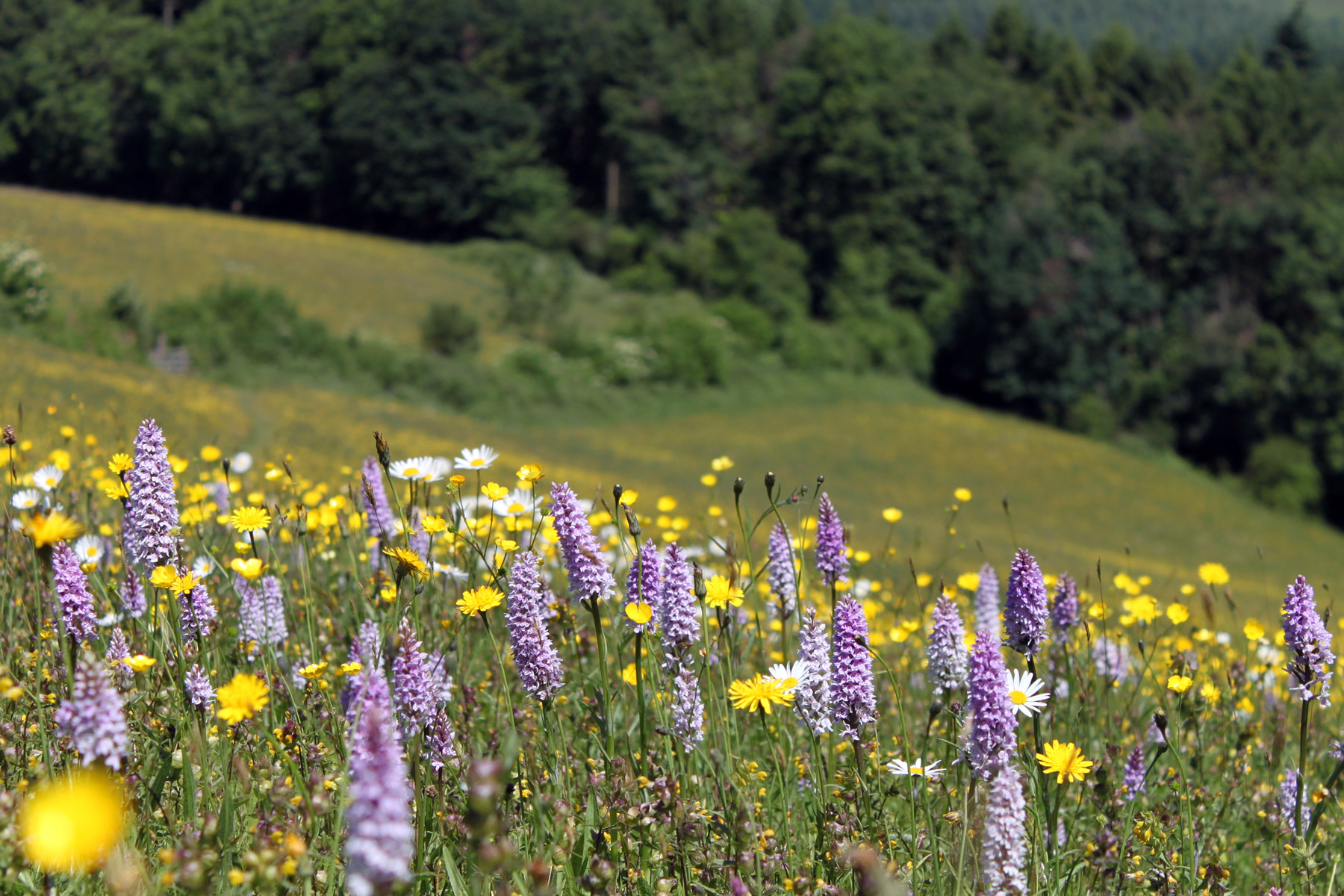Herefordshire Meadows first discussion meeting about soil health was held at Upper Pengethley Farm on 16 October courtesy of Julian and Sue Partridge with Kate Speke Adams leading the session. A Grassland soil health Resources Sheet is available with links to the materials available on the day including how / when to dig spade spits to look for worms and assess soil structure and rooting depth.
We dug soils growing permanent, moderately flower rich grassland in the parkland and compared this with arable reversion to permanent pasture, arable soil and a hay meadow created from arable more than a decade ago.
The final stop in the hay meadow clearly showed deep rooted grass, clover and herbs in well structured soil. This backed up Kate’s explanation of the science behind using planned rotational grazing with rest periods as a key tool to building up grassland soil organic matter, structure and health.
Kate’s top tips to consider
- Think about what the cause of poor structure/sward/stock is… is it chemical, physical or biological and then try to adapt management accordingly.
- Chemical: pH and cal:mag ratio can impact “structure” and tightness of soil particles.
- Biological: Change way it is grazed – rotational grazing can reduce selective grazing, increase trampling and density of manure droppings, graze duration / rest period
- Physical: Mechanical intervention like aeration, sward lifting or introducing with greater rooting depths and canopy cover – choosing appropriate native plants if existing sward is agriculturally unimproved
- Diversity of plants: roots at different depths and maximum photosynthesis throughout the year to feed the soil through root exudates
These days every farm has it’s own balance of hay meadows, ryegrass / clover leys, permanent pasture and herbal leys. Siting these to provide year round grazing and conserved forage, whilst allowing flower rich meadows and pastures to thrive IS the challenge for our Group. We are more likely to grow healthy swards of all kinds if the soil is healthy
So please get your spades out to assess your soil structure, get counting earthworms, get some of your soils tested and send us photos of what you find.
Two deep rooted swards photographed by Lucinda Lewis and Ed Dickson
Sward in set stocked permanent pasture with reasonable structure but shallower roots and ants (right photo)
Existing herb rich meadows are very sensitive changes in nutrient status if fym, fertilizers or lime are suddenly applied without careful consideration and review of past management. Increase in nutrient status and change of pH through the addition of lime can adversely affect species diversity. Investigating soil structure and finding out about the soils beneath our species rich grasslands is a good thing – they don’t automatically need additional inputs.
If you want help deciding which swards are the best to start your wildflower grassland restoration project or you’re in doubt where you should concentrate efforts to produce grass for commercial livestock or to satisfy the requirements of your grazier, just ask an Advisor







